Learning Japanese from scratch can be difficult for native English speakers. In this article, we explain why exactly Japanese is one of the hardest languages to learn and most importantly what’s the best way to learn Japanese. We also cover what lesson structures are generally like in Japanese language schools and proven-to-work tips from our WeXpats members for studying Japanese.
Photo by Dhafin Kumarajati on Unsplash
Table of Contents
- Is Japanese hard to learn?
- Why is Japanese so hard to learn?
- Japanese is Easy to Learn for Some People
- Best Way to Learn Japanese for Native English Speakers
- What are lessons at Japanese language schools like?
- Tips to Learning Japanese from Our Members
- Takeway
Is Japanese hard to learn?

Yes it is, according to the Foreign Service Institute’s Language Difficulty Rankings, which divides foreign languages into 5 categories based on the average time taken for students to reach business level proficiency in the language.
Japanese falls under the Category IV “Super-hard languages” alongside Chinese, Korean, and Arabic. The average time taken to reach business level proficiency in Japanese for native English speakers is 88 weeks (2200 class hours), or 1.7 years.
In comparison, Category 1 Languages which are considered “easy” take 24-30 weeks (600-750 class hours), or 5-7 months.
※ U.S. Department of State, “Foreign Service Institute Foreign Language Training”
Writer's Pick
Why is Japanese so hard to learn?

Japanese, and the other Category IV languages, are difficult to learn for native English speakers because they are completely different - from basic characters to sentence structures. The Japanese language does not use alphabets, not to mention the same Japanese character can be read differently and carry different meanings.
Many Characters and Vocabulary to Remember
The Japanese language is made up of three categories of characters or words, 「ひらがな hiragana」「カタカナ katakana」「漢字 kanji」. Kanji is especially difficult with many different characters, ways to read, and meanings. Not to mention, to start conversing or reading in Japanese, you would first need to acquire a decent amount of vocabulary.
Compared to other languages, Japanese has an overwhelming variety and number of vocabulary and characters. In addition, slang words are frequently created and word definitions may change with the flow of time. Not just foreigners, even people living in Japan find it difficult to keep up.
Many Ways to Read Kanji Characters
Kanji can be read in two ways「音読み onyomi」, the Chinese-derived way of reading and「訓読み kunyomi」, the local Japanese-derived way of reading. This is confusing to foreign nationals because the reading of the same Kanji depends on the flow of sentences and the vocabulary set up.
In addition, Japanese like to use 「当て字 ateji」in word games or when naming things. Ateji is when Kanji characters are used for their reading and how they sound whilst totally ignoring the definition of the character. For example, the word「アジア a-ji-a」”Asia” written as 「亜細亜」or the word 「めでたい medetai」”auspicious”written as 「目出度い」.
Subject of Sentence or Conversation is Omitted or Ambiguous
A really frustrating part of the Japanese language is the omission or ambiguity of the subject in sentences whether written or spoken. A huge part of Japanese communication is “reading the mood” or 「空気を読む kuuki wo yomu」, or in this case “identify the subject by reading the mood of the conversation”. And just like it sounds, it’s not that simple.
Here’s an example of a simple everyday conversation:
|
Direct Translation |
Natural English Translation |
|
A「髪切ったの?」 B「うん。どう?」 A「似合う。」 |
A「髪切ったの?」 B「うん。どう?」 A「似合う。」 |
As you can see from comparing both translations, proper English sentences require subject pronouns like “it” or “you” to properly identify the subject of the conversation. In comparison, Japanese sentences do not need to identify the subject but yet conversation flows well and naturally - A understood that B was asking how her haircut looked, and B would understand that A was referring to her haircut when complimenting.
Additionally, these two frequently used phrases in Japanese 「よろしくお願いします yoroshiku onegaishimasu」and 「あとは任せた ato wa makasete」are also very vague. Their meanings can change depending on context, what was discussed in conversation before, what’s the current situation, and what’s going to happen next.
For example, “yoroshiku onegaishimasu” said to someone you just met in a friendly capacity can mean “nice to meet you”, to a colleague can mean “I look forward to working with you”, when asking for a favour something along the lines of “please, much appreciated”.
Japanese is Easy to Learn for Some People

Foreigners who have similar language systems to Japanese tend to learn the language faster. In particular countries that use Chinese characters don’t have much problem with Kanji characters.
Countries that Find Japanese Easy to Learn
Foreign nationals of Taiwan and China are well acquainted with Chinese characters which are similar or even the same as some Kanji. Even if the way or reading is completely different, as long as the character is same or similar, the same meaning carries across.
We asked our WeXpats members what they found most difficult about learning Japanese. Members who knew Chinese had no problem with Kanji, whilst other members who did not know Chinese all thought of Kanji as one of the difficult things about learning Japanese.
For countries like Korea, Turkey and Mongolia, Kanji does not come easy as these countries do not practice Chinese characters. However, Japanese grammar is very similar to grammar in their respective mother tongues so reading comprehension and writing comes easier.
Easier to Pronounce Compared to Other Languages
Japanese sounds and pronunciations are limited and few. There’s also not much movement of the tongue required when speaking, no rolled Rs (actually no Rs at all) or other difficult mouth movements. This is why it can be said that learning to speak Japanese is easier compared to learning how to read and write. If you find yourself stuck whilst studying Japanese, it is a good idea to learn from listening.
Best Way to Learn Japanese for Native English Speakers
So, you want to learn Japanese. For someone with zero knowledge of Japanese, where should you start? Is it worth going for Japanese lessons this early in the game? In this part, we’ll guide you on the best and most efficient path to learning Japanese.
From Zero to Hero, Start with the Basics
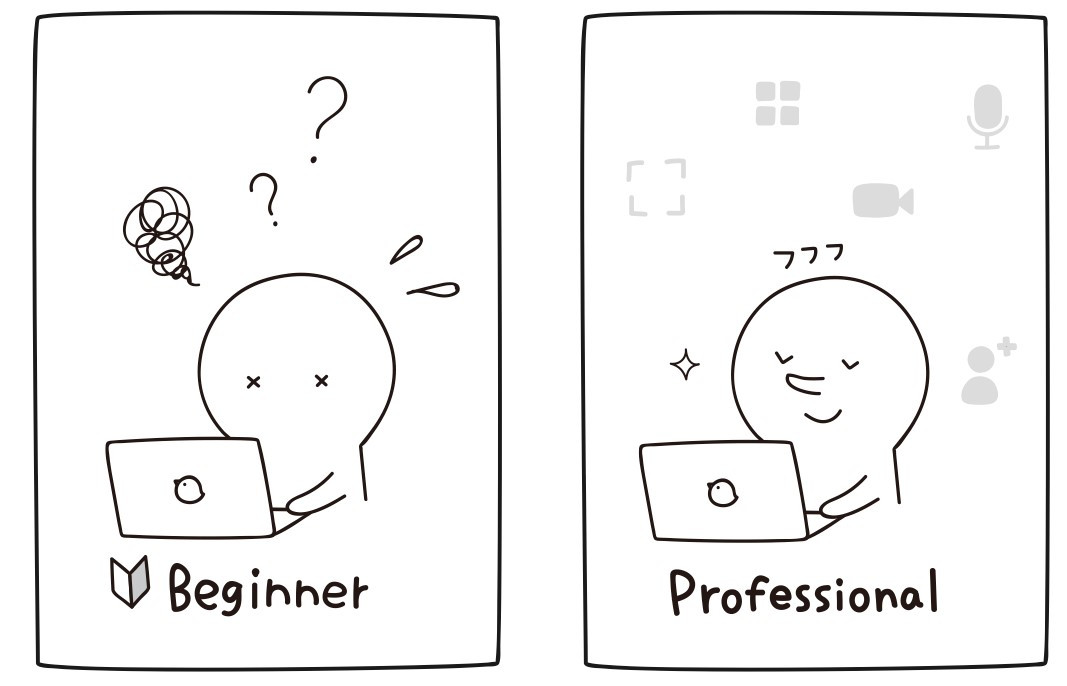
We start with learning the English alphabet when beginning English lessons. Well, the ABCs of Japanese are Hiragana. Start by learning how to read hiragana whilst also focusing on hitting the right pronunciations. All Japanese readings are based on combinations of hiragana so this is an important step to build a foundation on good reading, speaking, and pronouncing skills.
When you’ve gotten familiar with Hiragana, include practising writing Hiragana. This is helpful as whilst memorising Hiragana you may end up just remembering the sounds as opposed to the characters attached to the sound. After repeatedly practising writing Hiragana, bring it a step further by saying out loud and writing the Hiragana from memory.
Eventually, you’ll be able to recall everything perfectly just from memory. But, Japanese words will be combinations of different Hiragana, and not in perfect Hiragana a-i-u-e-o order. To practice reading Hiragana characters out of order, try using online Hiragana quizzes like Hiragana Quiz.
One Step Further, Katakana and Its Relationship to Hiragana
Katakana is, in simple terms, simplified Hiragana. Each Hiragana character has a Katakana equivalent with the exact same reading but different but incredibly similar characters. For example, “ka” is 「か」in Hiragana and 「カ」in Katakana, “fu” is 「ふ」in Hiragana and 「フ」in Katakana.
The usage of Katakana includes writing foreign words, onomatopoeia, furigana (hiragana or katakana for pronunciation). For example,
- foreign word “restaurant” is 「レストラン re-su-to-ra-n」
- onomatopoeia “meow” is 「ニャー nyaー」
- furigana for 「田中 太郎」is 「タナカ タロウ」or 「たなか たろう」
Learning Katakana after Hiragana is easy. The difficult part is remembering the Katakana characters. Many people find reading Katakana more difficult than Hiragana.
Start with A Collection of Basic Everyday Kanji
Now that you’re done with your basics, it’s time to challenge Kanji. Many people moan over the difficulty that is Kanji, but actually unless you’re planning on reading a lot or in a particular field that requires it, you don’t actually need to know that much Kanji.
For living in and travelling around Japan, knowing basic everyday Kanji is sufficient to get you going. Kanji used in everyday life are quite staple. You can get textbooks highlighting 500~1000 basic must-know Kanjis as a base along with vocabulary that uses these Kanji.
For example, the Kanji 「力」that can be read as 「ちから chikara」or 「りょく ryoku」. From this one simple Kanji characters you can pick up vocabulary like
- 「努力 doryoku」meaning “hard work”
- 「努力家 doryoku-ka」meaning “hard working person”
- 「力強い chikara tzuyoi」meaning “strong” or “powerful”
- 「協力 kyouryoku」meaning “cooperation”, and many more.
At this point, you will be able to read simple articles and children’s story books in Japanese which you should definitely do.
Tackling Japanese Grammar and Making Sentences
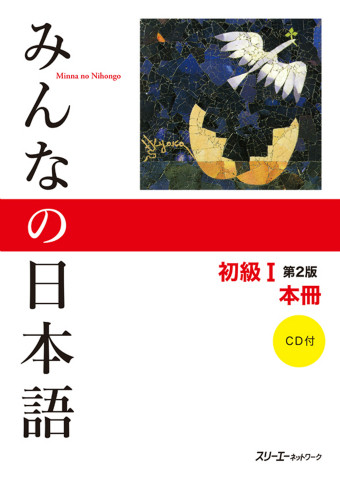
Image Credit: © 3A corporation
When you’ve mastered Hiragana and Katakana and know around 1000 vocabulary words, you’re ready to learn Japanese grammar, simple sentence making, and basic conversations. Your options at this point are to study yourself with a Japanese textbook or receive proper lessons, whether at a Japanese language class, online, or private tutor.
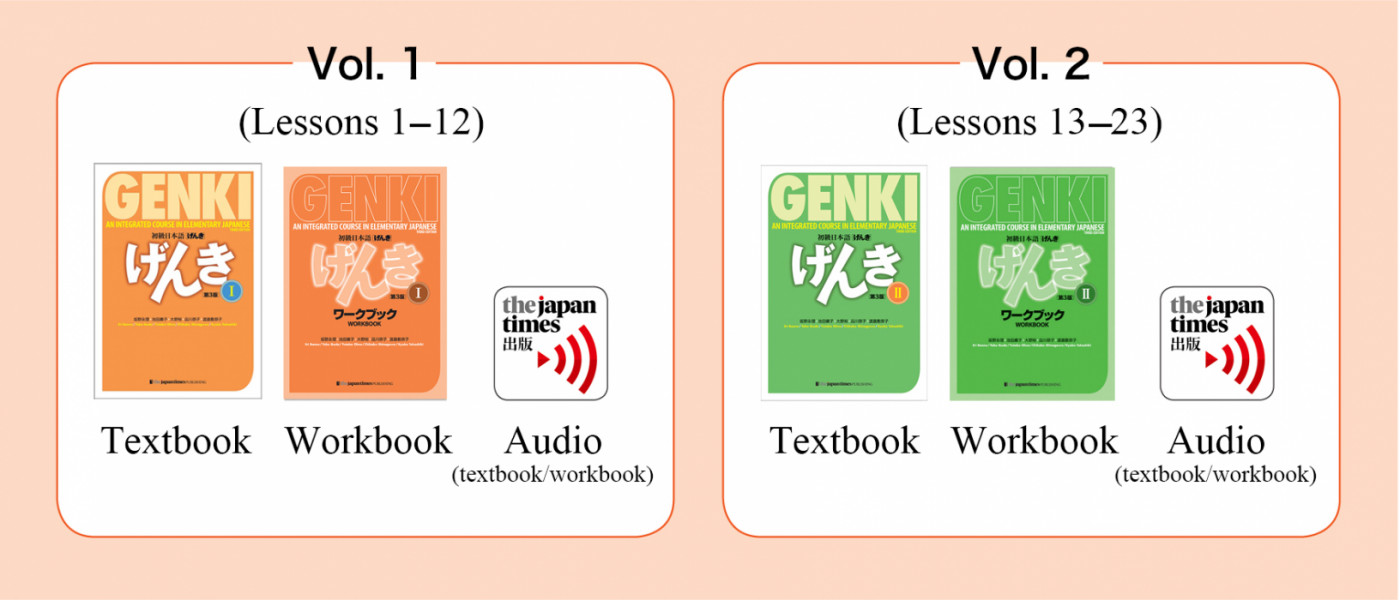
Image Credit: © The Japan Times Publishing, Ltd.
Find a Japanese textbook targeted at beginners. Minna no Nihongo, Genki, Japanese from Zero are great choices. Alternatively, or concurrently, following the JLPT’s N5 and N4 syllabus also works extremely well. For JLPT textbooks, we recommend So-Matome.
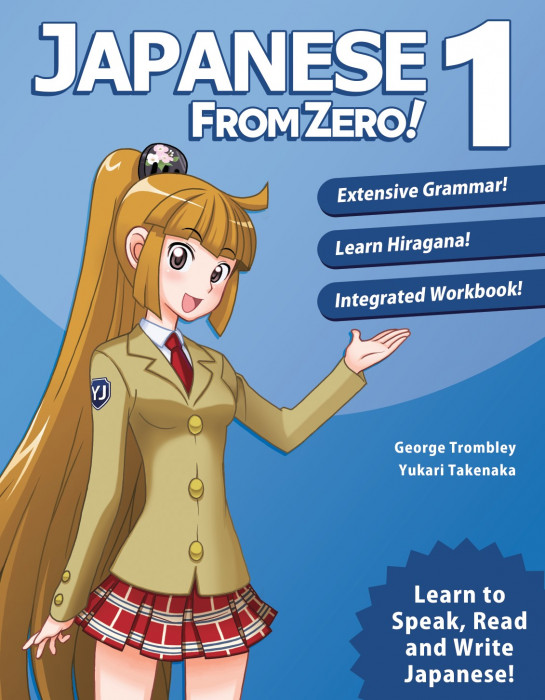
Image Credit: ©1996-2022 From Zero LLC
It’s up to you whether you want to take the JLPT tests for the beginner stages of learning Japanese. It’s a good way to test your knowledge and also a motivation to keep up studies. Note though that in practical terms, like work or entry into Japanese language schools, JLPT N5 or N4 are not really taken into account.
Intermediate Level and Onwards
The intermediate level is the greatest hurdle you will have to face. It is the in-between stage where you are no longer a beginner but yet can’t say you’re good or even decent in Japanese. Basically, you can tell you are not good or even bad at Japanese. This stage is very crucial as it is when many people get stuck in their studies and unmotivated to continue eventually giving up.
Biting the bullet works but learning Japanese, or any other language, is supposed to be fun. So, how do you avoid the pit of despair? Consider these:
-
Get professional help. Join a Japanese language class or get a private tutor. Having someone guide you helps a lot. When you get stuck, just ask! Your teacher may have tips to share or resources that will come in helpful.
-
Take it a step further and study abroad in Japan. It can be intimidating to visit Japan when you feel like your Japanese is mediocre but you’ll pick up Japanese a lot faster when fully immersed in the right environment.
-
Include fun ways to study Japanese into your Japanese studying schedule. Watching J-drama is the best way but it’s more important to keep your motivation up so use whatever you like - music, anime, manga, etc.
What are lessons at Japanese language schools like?
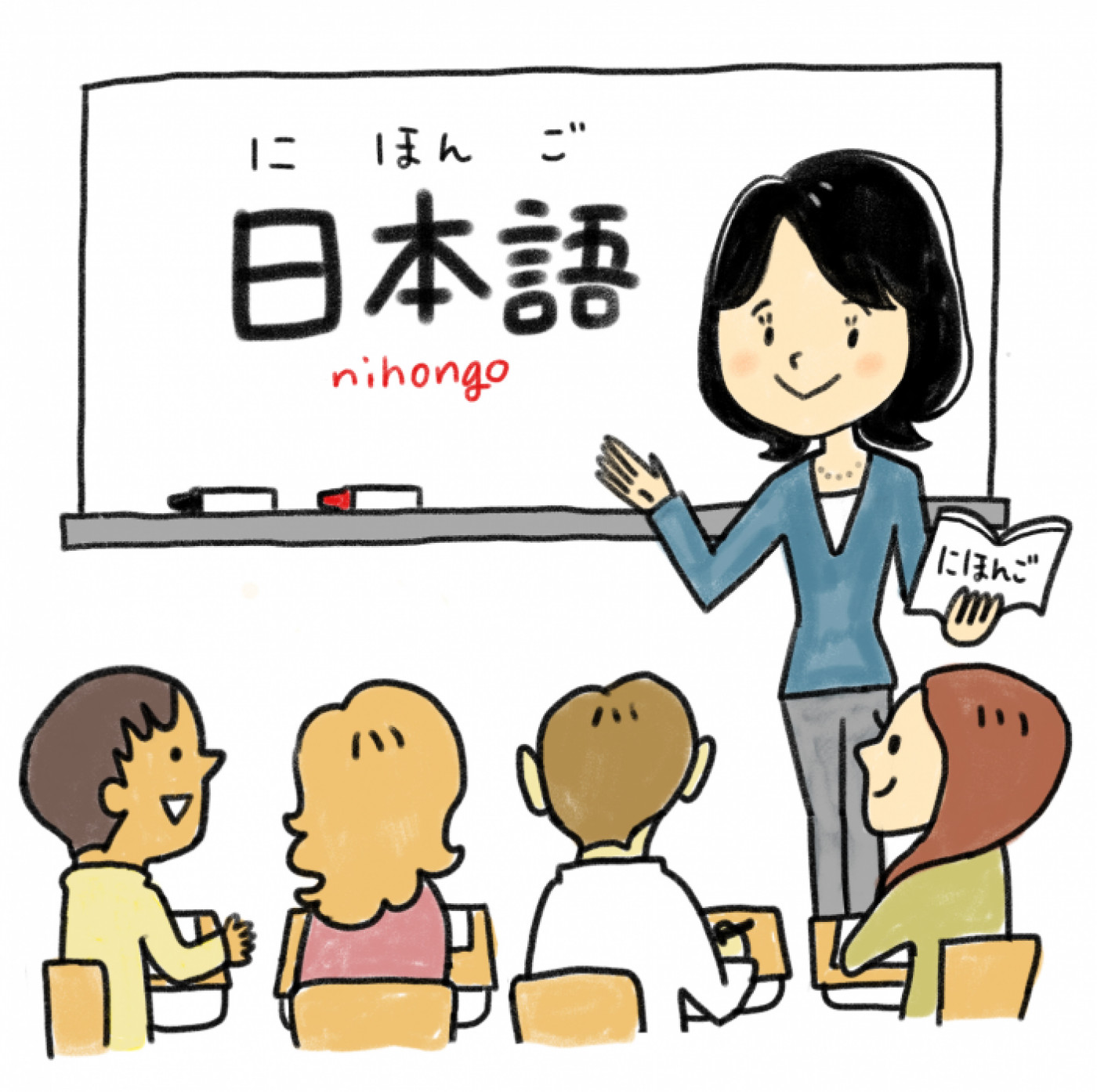
There are many different types of Japanese language schools and classes in Japan, each with their own lesson plans, chosen textbooks, and teaching styles. There are business schools for working class people, university preparation classes for those aiming to take university entrance exams, culture focused classes for those interested in Japanese culture and more. Lessons at Japanese language schools are usually holistically structured so students can study a good balance of reading, listening, writing, and speaking.
Generally, the structure of lessons at Japanese language schools looks something like this:
Kana → Grammar + Kanji + Reading Comprehension → Keigo
In every lesson, a number of vocabulary and sentence structures will be covered as well as dialogue / conversation practice. Textbooks will be used, practice workbooks may be used, as well as CDs for listening practice. Exams at the end of the semester are also commonplace to test your knowledge and readiness for the next level.
It is very important to choose a good Japanese language school. Wondering how to choose a Japanese Language School? We have 3 articles introducing Japanese language schools we interviewed in Japan:
Tips to Learning & Improving Japanese from Our Members
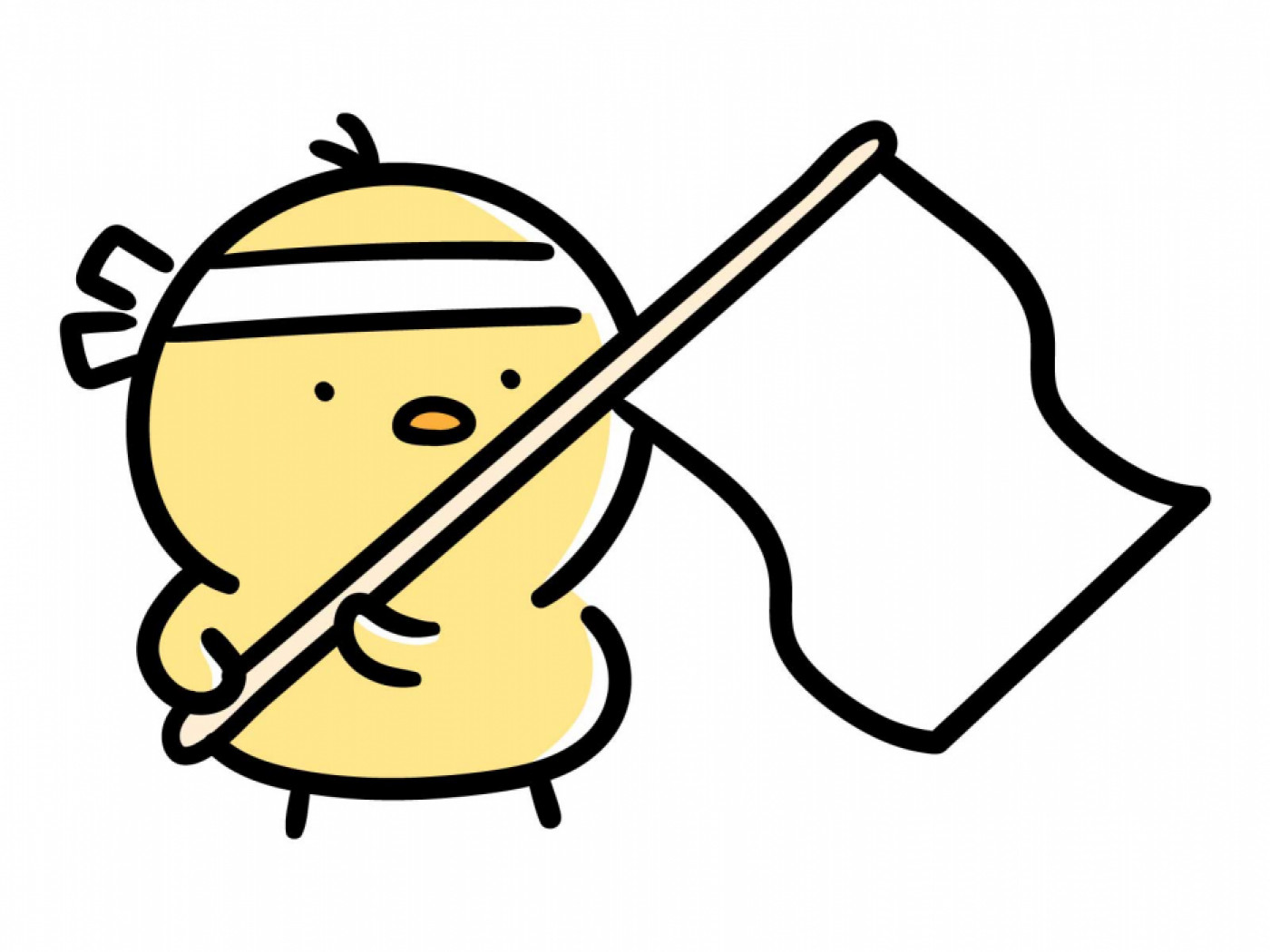
We asked our WeXpats Team Members how they studied Japanese. Here are their responses:
Aside from textbooks, what else is useful for studying Japanese?
Majority of respondents answered that watching Japanese drama & movies, working a part time job in Japan, and reading Japanese books (not textbooks) were the most useful.
Other answers included watching anime, reading manga, speaking Japanese at home, interacting with Japanese people, and watching Japanese Youtube videos.
Any advice for Japanese learners?
Finding what you like in Japanese culture (anime, drama, singer) and studying happily will keep you motivated!
Watch shows with Japanese subtitles.
Pick up Japanese from watching Japanese movies or drama.
(For beginner learners,) Try reading Japanese children's storybooks. You can get them for cheap at BookOff or visit local libraries.
(For international students in Japan) Get a part time job, pick up phrases and expressions from talking with people.
Takeway
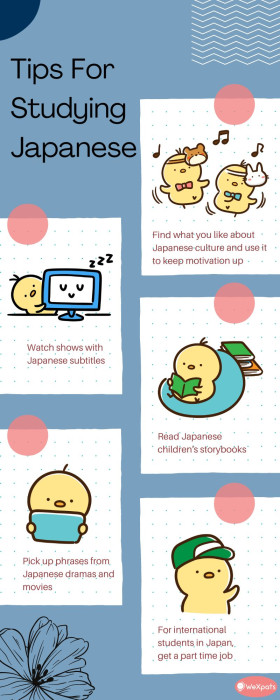
Japanese doesn’t have to be a difficult suffering process. By studying the proper way and practising good study habits, you can build a solid foundation that will pave the way for easier and more efficient Japanese studies.
































